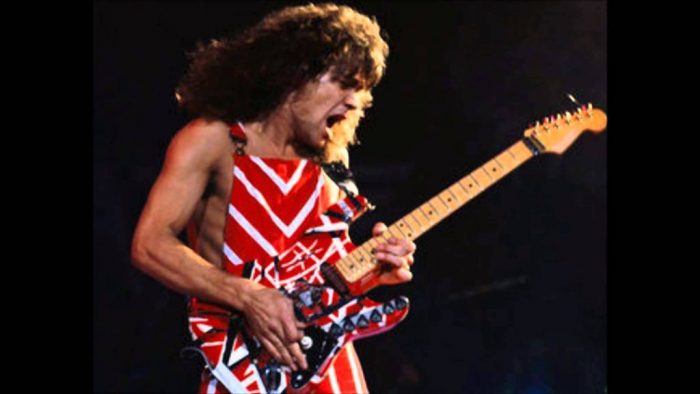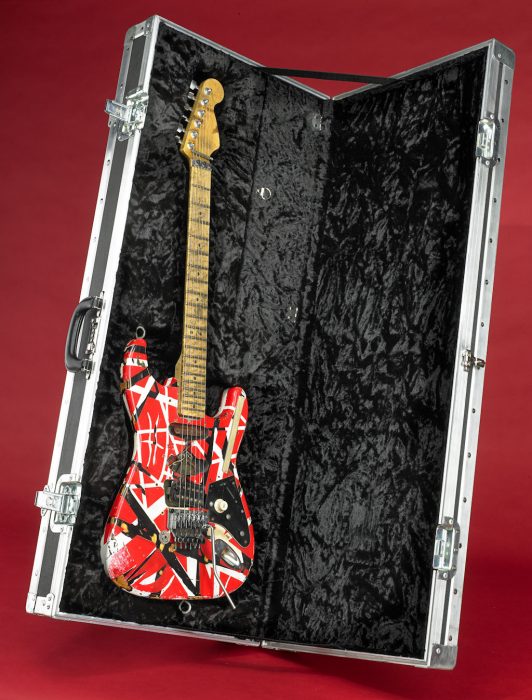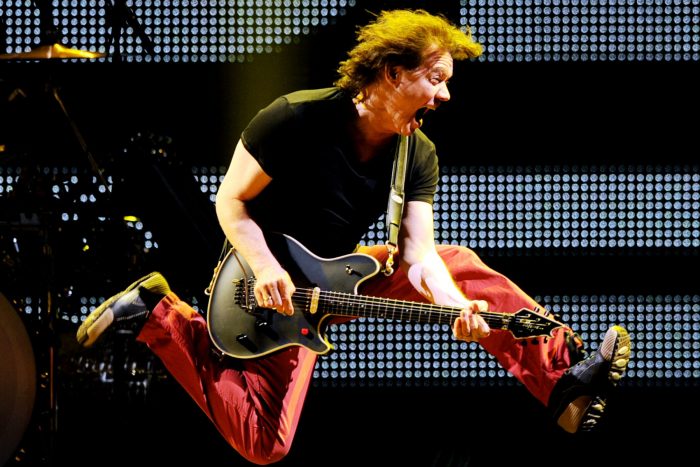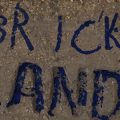Rest in Power Rock, Eddie.
Eddie Van Halen’s “monster” of a guitar rocks American History
Sadly, legendary rock icon and guitar god Eddie Van Halen lost his fight with throat cancer Oct. 5, 2020 at the age of 65. In tribute, we are republishing this post by Marilyn Scallan. Rest in Power Rock, Eddie.

Eddie Van Halen with the original “Frankenstein.”
From Stradivari’s violin to Dizzy Gillespie’s trumpet, the collection of musical instruments at the American History Museum pays homage to some of the world’s greatest musicians. Now, a guitar made famous by one of
arena-rock’s most driving, tube-amp-stacked, influential rock guitarists of all time has joined the collection. Eddie Van Halen’s “Frank 2,” (or Frankenstein Replica) is one of a limited-edition number of guitars made in 2006 in a joint venture between the artist’s EVH Brand and Fender.
“We collected ‘Frank 2’ not just for the significance of the guitar, but because Eddie is such an influential, talented and innovative musician whose techniques are still emulated,” said Eric Jentsch, deputy chair and curator in the museum’s Division of Culture and the Arts.

This 2007 remake of Eddie Van Halen’s iconic 1977 guitar, “Frankenstein” is a symbol of the self-designed and custom-built guitars of 1970s and 1980s rock, where sound and style were equally important. It was donated to the National Museum of American History in 2011. (Photo by Hugh Talman)
Edward “Eddie” Van Halen is a Dutch-Indonesian-American guitarist, keyboardist, songwriter, producer and self-taught inventor of guitar technology and technique. He is the lead guitarist and cofounder of the hard-rock band Van Halen and is known for his blues-based rock, finger tapping and “false harmonics” (a combination of tapping and harmonics), intense solos and high-frequency feedback, and his energetic and acrobatic stage performances. His use of two-handed tapping, natural and artificial harmonics, vibrato, and tremolo picking have influenced an entire generation of guitarists. According to All Music Guide, he is “second to only Jimi Hendrix” in influence, originality and talent.
Van Halen formed in Pasadena, Calif., in 1974. Initially, the band had trouble getting gigs at popular Los Angeles clubs because Eddie was too loud; to get his amplifier to sound its best, he would turn it all the way up (to 11). To muffle it, he would turn it around or put padding in front of it; later he adjusted the amp’s voltage instead of volume.

Eddie Van Halen (Photo by Kevin WInter/Getty)
In 1975 Eddie realized that no existing guitar had the features he needed to create his signature sound. A constant tinkerer, he set out to construct a guitar to fit his standards, needs and playing style, combining different elements of long-established guitar designs into one instrument. Fans nicknamed the custom creation “Frankenstein.” By 2006, the original “Frankenstein” guitar had been in service for more than 30 years and was retired from performances. Chip Ellis, a master guitar builder at Fender, replicated every detail of the original guitar, which, when presented to Eddie, appeared to be indistinguishable from the original. During the Van Halen 2007-08 North American tour with original lead singer David Lee Roth, Eddie used the replica guitar, “Frank 2” for the majority of the performances.
The band’s self-titled debut album was released Feb. 10, 1978. Since then, Van Halen has sold more than 80 million albums worldwide.
Posted: 7 October 2020
-
Categories:
American History Museum , Feature Stories , History and Culture






I am a big VH fan, yet your article taught me some new stuff! Thanks, and I’ll be planning a visit soon to ogle Eddie’s axe.